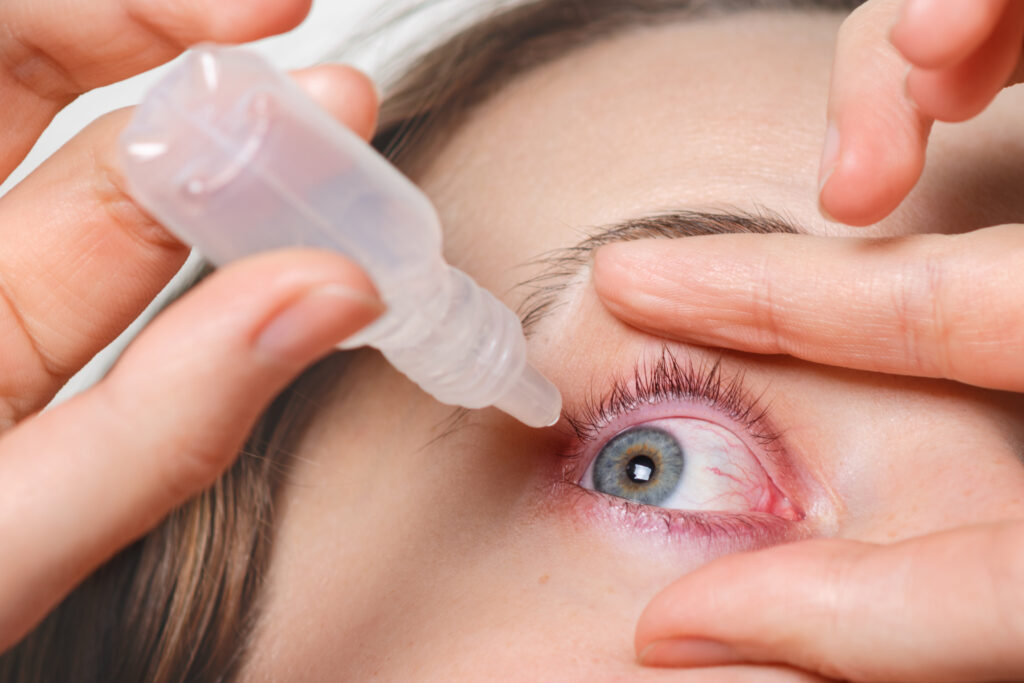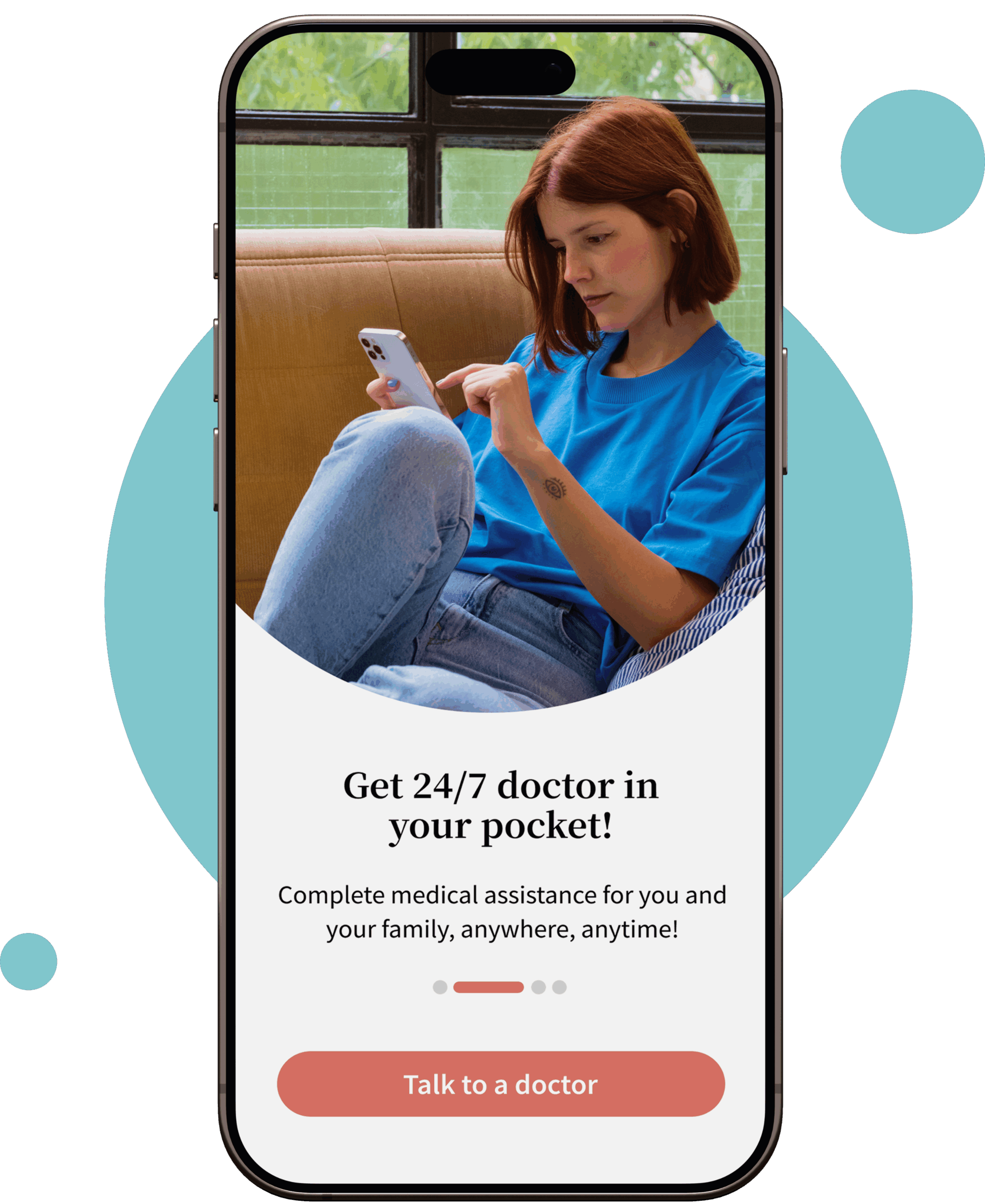Table of Contents
ToggleOverview
The painful condition of shingles in the eye, caused by the varicella-zoster virus, is characterized by blisters, swelling, and redness in the area of the eye. It can happen after chickenpox when the latent virus reawakens in the nerves. If caught early enough, antiviral medication and possibly steroids can lessen the blow and save the eyes from permanent damage. This blog covers the symptoms of shingles in your eye, its causes, and treatment in detail.
What are Ocular Shingles?
Ocular shingles, also known as herpes zoster ophthalmicus (HZO), is a viral infection caused by the varicella-zoster virus—the same virus responsible for chickenpox and shingles. Reactivation of the virus can impact the trigeminal nerve’s ophthalmic branch, which provides feeling to the eye, eyelids, and forehead. The itchy rash surrounding the eyes is the primary symptom of ocular shingles, which can also cause swelling, redness, itching, and in more severe cases, blindness or other visual problems.
Ocular shingles treatment varies based on the specific eye involvement and may include steroids alongside antiviral drugs. Steroids, if used, are tapered slowly over months to years to prevent complications. Shingles can lead to postherpetic neuralgia (PHN), resulting in chronic skin sensitivity or pain, which may require medications for relief if it persists beyond several months.
How do you know if you have shingles in your eye?
If you suspect you have shingles in your eye, be vigilant for several distinct symptoms.
Initial Symptoms of Ocular Herpes Zoster:
- Tingling or burning sensation on the scalp, forehead, or cheeks.
- Development of a painful rash on one side of the face, extending to the scalp, forehead, and around the eye.
Progressive Symptoms (When the eye is affected):
- Redness in the eye.
- The sensation of foreign matter in the eye.
- Heightened sensitivity to light.
- Pain in the eye.
- Discharge from the eye.
- Varying degrees of vision impairment.
Additional Symptoms of Ocular shingles:
- The rash may emerge on the eyelids, forehead, or nose simultaneously with the skin rash or appear weeks later.
- Burning or throbbing eye pain.
- Increased tearing.
- Eye irritation.
- Blurred vision.
- Extreme sensitivity to light.
- Swelling in the eyelid, retina, or cornea.
Prompt medical attention is imperative upon experiencing any of these symptoms to mitigate the risk of potential long-term complications.
How did I get shingles in my eye?
If you have had chicken pox, you can have shingles in your eye later on. The chickenpox virus lives in the nerves even after you have healed from it and manifests as Herpes Zoster Opthalmicus when it reaches the eye. Various symptoms, including a painful and notorious shingles rash around the eye region, accompany shingles.
When does shingles pain peak?
Shingles typically peak in pain intensity around 4 or 5 days after the initial symptoms appear, often accompanied by a blistering rash. This viral infection induces persistent pain and itching, lasting approximately 3 to 5 weeks. Early recognition and medical intervention are crucial for effective management and symptom relief.
What are the risk factors for shingles in the eye?
The risk factors for shingles in the eyes include stress, a weakened immune system, and age. The risk of getting shingles can also be raised by taking certain medications. Corticosteroids and anti-tumor necrosis factor (TNF) drugs are two examples of immunosuppressants that may be included in this category. However, it is important to note that generally, there are no specific medications that can trigger shingles in your eyes.
What is the best treatment for shingles in the eye?
The best eye shingles treatment for the Herpes Zoster Ophthalmicus (HZO) virus is an antiviral medication. Some antiviral drugs that are frequently recommended upon diagnosis of shingles in the eyes include Famvir (Famciclovir), Valacyclovir (Valtrex), and Acyclovir (Zovirax).
These antiviral medications help you heal from the viral infection and its drastic effects on your eyes and eye region. If you get the right treatment within three days of infection, you can heal fast without drastically affecting your eyes.
Your doctor may also recommend a steroid medication such as a pill or eye drops to reduce eye swelling. In some cases, postherpetic neuralgia develops due to shingles. Pain medication and antidepressants help relieve the pain.
How to prevent eye shingles?
Take into consideration the following preventive actions to lower your risk of having herpes zoster ophthalmicus, or shingles in the eye:
Vaccination:
The shingles vaccine, also known as the herpes zoster vaccine, is highly effective in reducing the risk of shingles and its complications, including ocular involvement. The CDC recommends the Shingrix vaccine for adults aged 50 and older.
Maintain a Healthy Immune System:
Maintaining a healthy diet, getting regular exercise, controlling your stress levels, and getting enough sleep will all help to strengthen your immune system. A strong immune system can aid in preventing the varicella-zoster virus from reactivating.
Avoid Close Contact with Individuals with Active Shingles:
The varicella-zoster virus, which causes shingles, can be spread by direct touch with an individual experiencing the rash. Steer clear of people close to someone who has shingles, particularly if you haven’t got the shingles vaccine or chickenpox.
Avoid Touching Your Eyes:
Keep your hands off your eyes to prevent the introduction of bacteria or viruses, such as the varicella-zoster virus that can cause shingles.
Protect Your Eyes from Injury:
Put on protective eyewear when engaging in activities that increase your risk of eye injury, like playing sports or handling dangerous products. Injuries to the eye can compromise the eye’s defenses and raise the possibility of viral infections, such as shingles.
Maintain Good Eye Hygiene:
Wash your face and eyelids with gentle soap and water frequently to keep your eyes clear and free of allergens. Refrain from over-rubbing your eyes,, which may irritate them and perhaps introduce germs.
Practice Good Hygiene:
Wash your hands frequently with soap and water, especially after coming into contact with individuals who have shingles or their belongings.
Manage Stress:
Prolonged stress might impair immunity, increasing your risk of developing shingles. Engage in stress-relieving activities like yoga, meditation, deep breathing, and outdoor time.
How long do shingles in the eye last?
Ocular shingles, or shingles in the eye, can last for various lengths of time, depending on the severity of the infection, how quickly it is treated, and each person’s immune system. Shingles in the eye usually persist for a few weeks to a month or longer. However, the pain and discomfort associated with the condition may persist even after the rash has healed, a condition mentioned previously known as postherpetic neuralgia (PHN).
Consult a doctor
It is necessary to seek immediate medical attention if you suspect shingles in your eyes. The drastic and long-term effects of shingles in your eyes can be prevented if you get a quick diagnosis and start treatment immediately. Symptoms like a shingles rash, redness, swelling, and pain in one side of the nose or forehead should not be taken for granted and you should consult an online doctor immediately.
FAQs about shingles in your eye
Shingles in the eye actually come from the chickenpox virus, but it is not contagious, unlike chickenpox. You can not pass shingles in the eyes to anyone else, but you can pass the Herpes Zoster virus to someone who never had ChickenPox, and they may develop chicken pox due to Herpes Zoster Ophthalmicus (HZO).
No, the shingles in the eye do not directly affect the brain; however, they can cause peripheral motor neuropathy or postherpetic neuralgia.







